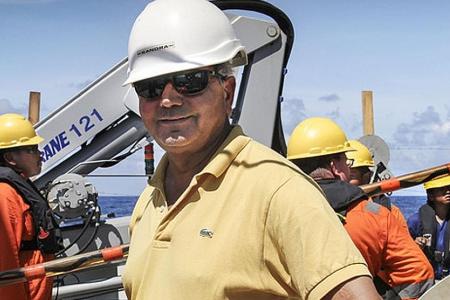NTU leads third expedition to study earthquakes
A university-led international expedition sets sail today to shed light on mysterious earthquakes.
Helmed by visiting Professor Satish Singh from Nanyang Technological University's (NTU) Earth Observatory of Singapore (EOS), the team will cover at least 150,000 sq km - an area bigger than 200 Singapores - to understand why two massive earthquakes in 2012 shook the seas off Indonesia in an area that was not previously known to have large temblors.
While huge quakes tend to occur along the boundaries of tectonic plates as they shift, the two that struck that April - one of magnitude 8.6 and an aftershock of 8.2 - occurred within the boundaries of existing plates.
"Our research suggests that there might be a plate boundary between India and Australia that is being created as we speak," said Prof Singh, who is with the French research body Institut de Physique du Globe de Paris.
That is why he is leading the third expedition of its kind to study the earthquakes.
With him are 34 scientists, three of whom are also from EOS, and 15 students. Their one-month expedition takes place on the French research ship Marion Dufresne, which, at 120m, is about half the length of the Titanic.
The Marine Investigation of the Rupture Anatomy of the 2012 Great Earthquake, abbreviated to Mirage, will map and study the ocean bed off the north-western coast of Indonesia to a depth of 30m, and will also drill up to 50km beneath the sea floor to accurately map the tectonic plate structure of the area.
Last year's expedition, also led by NTU, penetrated up to 30m beneath the sea floor.
Prof Singh said: "Last year, we saw the face on the seabed... now we want to look at the heart of where earthquakes occur."
Aside from EOS, the other two institutions involved are Institut de Physique du Globe de Paris and the Indonesian Institute of Sciences (LIPI).
Dr Nugroho Hananto from LIPI said that this expedition would help explain why the magnitude 8.6 earthquake in 2012 generated no tsunami, despite being one of the largest recorded in the ocean.
Get The New Paper on your phone with the free TNP app. Download from the Apple App Store or Google Play Store now



